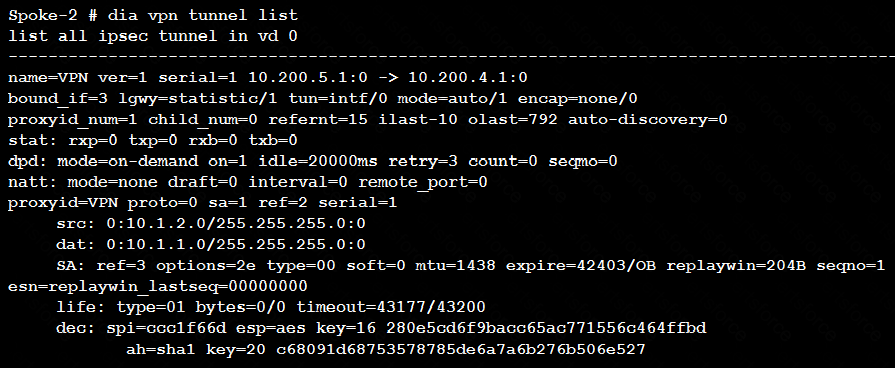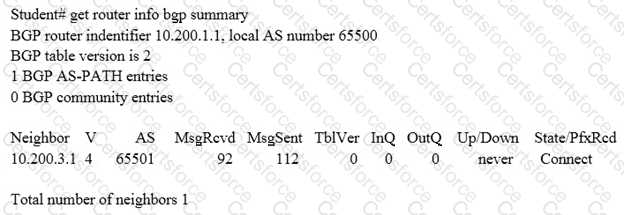Two independent FortiGate HA clusters are connected to the same broadcast domain. The administrator has reported that both clusters are using the same HA virtual MAC address. This creates a duplicated MAC address problem in the network. What HA setting must be changed in one of the HA clusters to fix the problem?
Refer to the exhibit, which contains the partial output of a diagnose command.

Based on the output, which two statements are correct? (Choose two.)
View the central management configuration shown in the exhibit, and then answer the question below.

Which server will FortiGate choose for antivirus and IPS updates if 10.0.1.243 is experiencing an outage?
Which configuration can be used to reduce the number of BGP sessions in an IBGP network?
Examine the output of the ‘get router info bgp summary’ command shown in the exhibit; then answer the question below.

Which statement can explain why the state of the remote BGP peer 10.200.3.1 is Connect?
An administrator has been assigned the task of creating a set of firewall policies which must be evaluated before any custom policies defined within the policy packages of managed FortiGate devices, across all 25 ADOMSs in FortiManager.
How should the administrator accomplish this task?
View the exhibit, which contains the partial output of an IKE real-time debug, and then answer the question below.

Why didn’t the tunnel come up?
Examine the output from the 'diagnose debug authd fsso list' command; then answer the question below.
# diagnose debug authd fsso list —FSSO logons-IP: 192.168.3.1 User: STUDENT Groups: TRAININGAD/USERS Workstation: INTERNAL2. TRAINING. LAB The IP address 192.168.3.1 is NOT the one used by the workstation INTERNAL2. TRAINING. LAB.
What should the administrator check?
Which of the following statements is true regarding a FortiGate configured as an explicit web proxy?
Examine the following partial outputs from two routing debug commands; then answer the question below.
# get router info kernel
tab=254 vf=0 scope=0type=1 proto=11 prio=0 0.0.0.0/0.0.0.0/0->0.0.0.0/0 pref=0.0.0.0
gwy=10.200.1.254 dev=2(port1)
tab=254 vf=0 scope=0type=1 proto=11 prio=10 0.0.0.0/0.0.0.0/0->0.0.0.0/0 pref=0.0.0.0
gwy=10.200.2.254 dev=3(port2)
tab=254 vf=0 scope=253type=1 proto=2 prio=0 0.0.0.0/0.0.0.0/.->10.0.1.0/24 pref=10.0.1.254
gwy=0.0.0.0 dev=4(port3)
# get router info routing-table all s*0.0.0.0/0 [10/0] via 10.200.1.254, portl [10/0] via 10.200.2.254, port2, [10/0] dO.0.1.0/24 is directly connected, port3 dO.200.1.0/24 is directly connected, portl d0.200.2.0/24 is directly connected, port2
Which outbound interface or interfaces will be used by this FortiGate to route web traffic from internal users to the Internet?